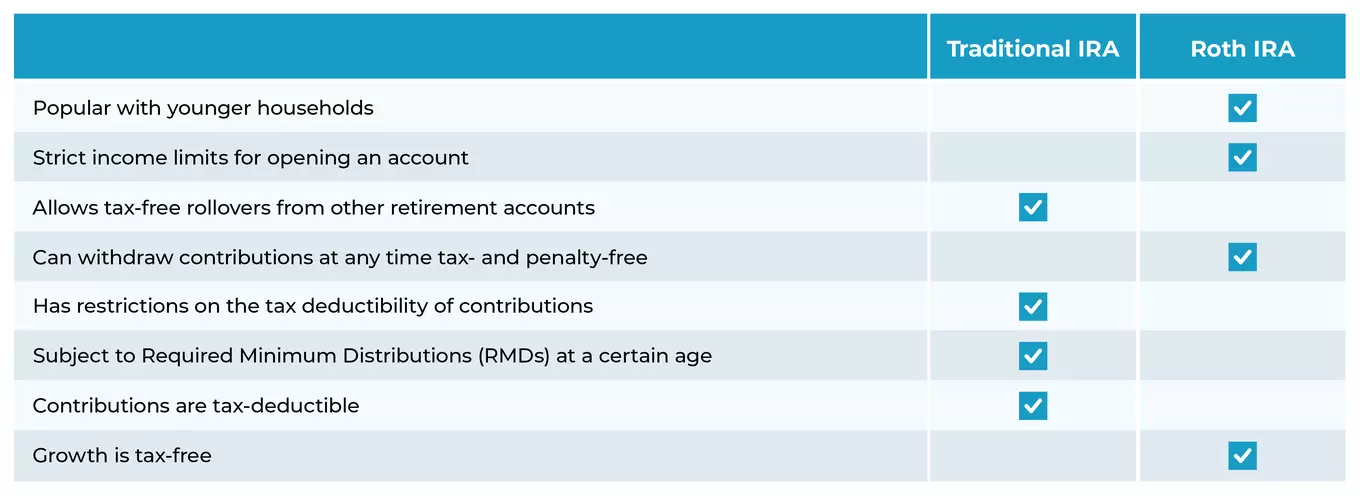Maximize the benefits of IRAs this tax season

Tax season is more than just a time to file your return, it’s also a good time to double-check that you’re getting the most out of the retirement tools available to you! Individual Retirement Accounts (IRAs) are one of the most accessible and tax-friendly ways to build long-term financial security.
Did you know, you have until April 15, 2025, to make contributions to your IRA (traditional or Roth) for the 2024 tax year? That means there’s still time to boost your retirement savings and potentially reduce your 2024 tax bill.
Unlike a 401(k) or other employer-sponsored retirement plan, IRAs are available to nearly anyone with income—or a spouse with earned income. Whether you’re working part-time, freelancing, or between employers, IRAs give you a flexible way to save for retirement while potentially lowering your tax bill.
Why IRAs are a smart choice
IRAs have been around for nearly 50 years, and their popularity as tax-deferred retirement accounts continues to grow. In fact, 44% of U.S. households reported that they owned IRAs as of mid-2024, up from 34% a decade ago. There’s a good reason IRAs are gaining popularity: Like 401(k)s and other employer-sponsored retirement plans, IRAs offer key tax advantages for Americans to maximize their retirement savings.
There are two main types of IRAs:

Choosing the Right IRA for you
Traditional IRAs are often favored by those looking to lower their taxable income now, while Roth IRAs appeal to younger savers who expect their income to rise over time. Both options offer long-term growth potential and can be customized with a wide range of investment choices.
Even if you already contribute to an employer-based plan, an IRA can supplement your savings. In fact, most IRA-owning households also have workplace retirement accounts or pensions, according to recent research.
Here are a few situations where an IRA might be especially helpful:
- Your employer doesn’t offer a retirement plan.
- You want more investment options than your current plan provides.
- You’re consolidating accounts from multiple employers into one place.
Tax advantages you don’t want to miss
One of the biggest perks of IRAs is that your investments grow tax-deferred. You won’t pay taxes on dividends, capital gains, or other income earned inside the account until you withdraw the funds (or not at all, in the case of Roth IRA qualified distributions). That means more of your money stays invested, and keeps growing, over time.
You can also make contributions for the previous tax year up until the April tax deadline, which can help lower your taxable income and increase your refund. (Just make sure to double-check the contribution limits and eligibility rules each year.)
Some of These Tax Benefits May Be at Risk
Major provisions of the 2017 tax reform law are scheduled to expire at the end of 2025. That could mean changes to the rules—and tax advantages—that apply to IRAs and other retirement accounts. As lawmakers debate how to adjust the federal budget and tax code, it’s critical that savers make their voices heard.
IRAs are a powerful tool to help Americans build a more secure retirement—but they rely on strong public policy to remain effective. If you want to protect the tax benefits of IRAs, 401(k)s, and other retirement savings vehicles, now’s the time to act.
At Secure Financial Future, we’re committed to protecting your ability to save for retirement without unnecessary restrictions or penalties. Join our action network today and help ensure policymakers know how important these savings tools are to your future.

